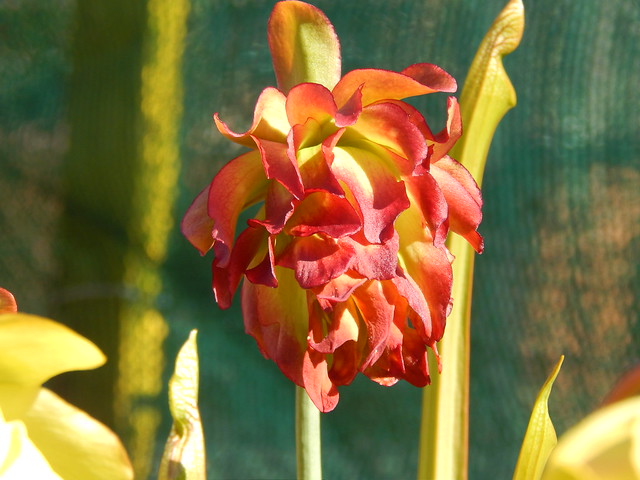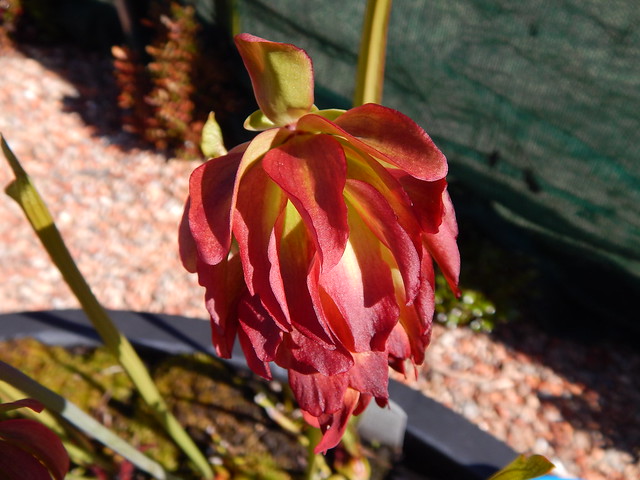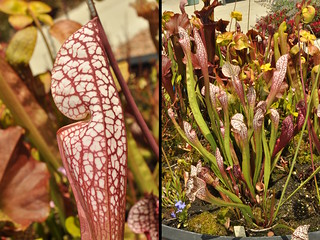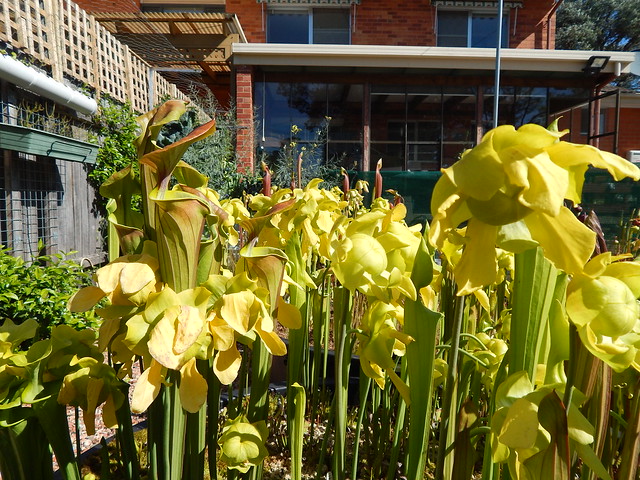This is the last of a three part post. Click Here to see Part I and Here to see Part II.
Last but not least, let’s take a look at the Sarracenia hybrid bog garden, and some Drosera hidden though all three of my bog gardens.
Star of this bog is Sarracenia leucophylla cv. “Tarnok”. It is a fairly typical S. leucophylla in every way except one – it has flowers that are bizarre and pom-pom like. It could almost be a sculpture or a dress design…
To be more precise, Tarnok’s flower doesn’t actually produce petals. Instead the “flower” is made up of serially repeated calyces.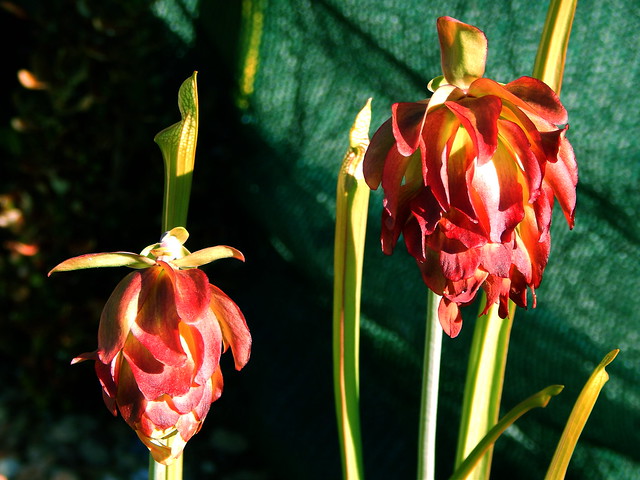
The calyx is the part of a Sarracenia flower that lasts for pretty much the entire growing season, so “Tarnok” is excellent because it adds an interesting and long-lasting “flower” to the collection. Unfortunately, I always loose a number of “Tarnok” flowers to insects, and this year I last some six flowers. Typically, few if any other flowers are ever affected. As a museum curator once told me about looking after insect collections, pests read the books: they know which are the rarities in any collection and seek them out before attacking anything else…
These deep red flowers belong to Sarracenia leucophylla x psittacina. This fairly common hybrid is definitely worth growing. The pitchers are spectacular and come in a variety of forms, depending on the plant, that range from closed a la Sarracenia psittacina to fully open. My plants came from Gotcha! Plants. When John sows sarracenia seed, he often puts three seeds to a pot to ensure decent germination rates. So, I have three different clones growing together in a clump. If you enlarge the picture at right, see if you can recognise the different trap produced by each clone.
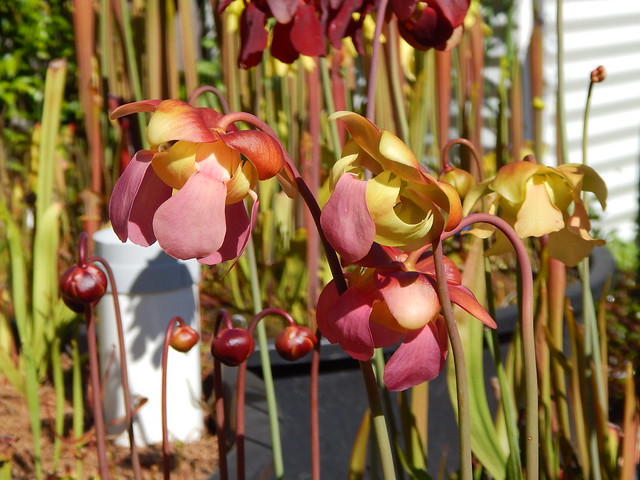
This plant is one of a large series of crosses made by David Martin involving Sarracenia x formosa. Shown above are flowers of S. rubra spp. gulfensis and S. x formosa. These crosses always have a beautiful, wide and flaring hood with delicate windows from the formosa parent, and loads of colour from the rubra parent. One of the best of David’s formosa crosses is S. leucophylla x (x formosa), which I came close to loosing last year.
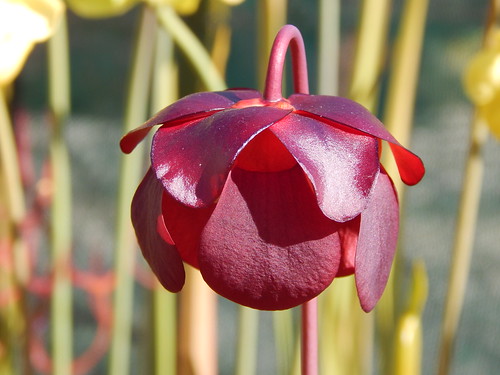
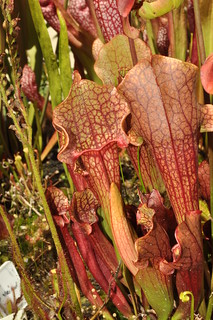
This S. purpurea hybrid is one of my favourite plants. David can not remember what this cross is, so its parentage is lost to the sands of time. But it is truly beautiful come late summer, with its deep maroon pitchers and flaring hood. The midsummer pitchers are right are much paler in contrast.
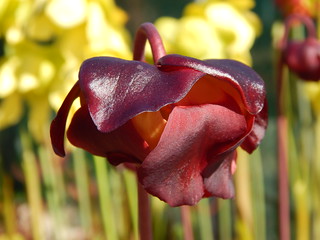
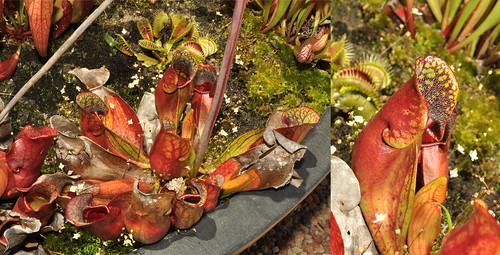
This nicely coloured Sarracenia purpurea is grown from seed collected in Ontario.
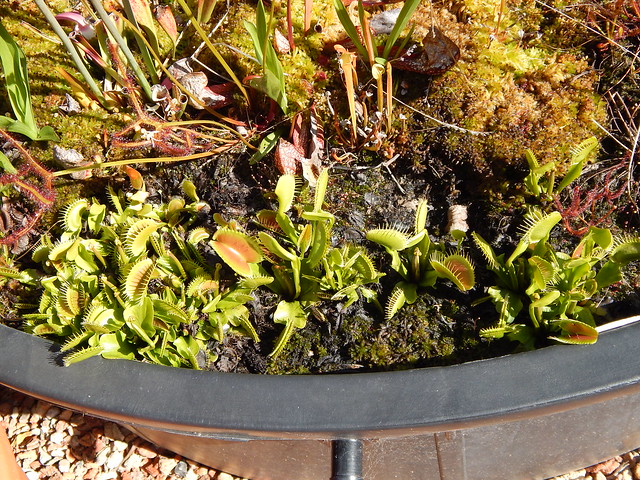
I also grow flytraps in this bog garden. The clone at left is one of Paradisea’s mass produced clones that can be very high on tissue culture hormones when they reach the shops. If fed well, they can quickly grow into large clumps. This clump has had a number of plants removed from it over the last few years for some people just getting into carnivorous plants, but it is still impressively large. The middle and right plants are a large clone that John Creevey produced. They are just starting to throw flowers now; I will quickly trim them off because they drain too much energy from the plants and I have never had success with cross pollination.
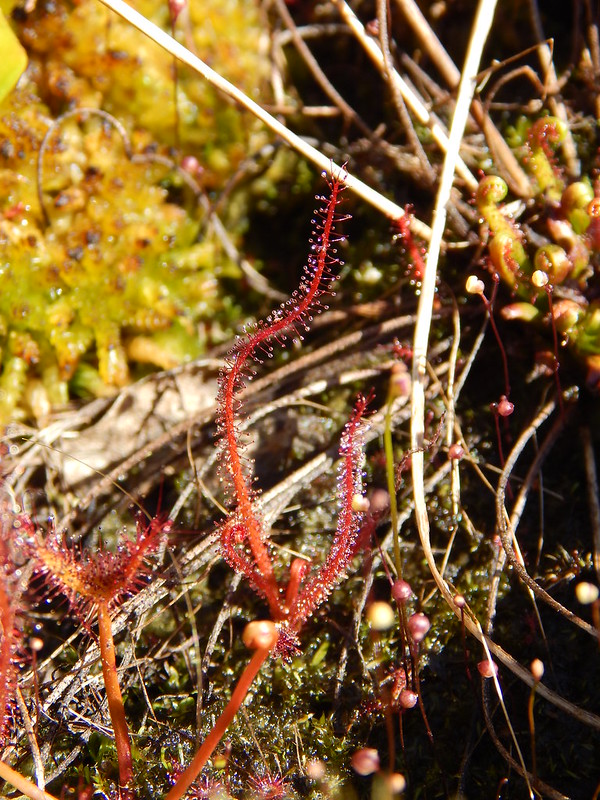
At centre in this photo is the red form of Drosera filiformis available in Australia. It was first available ex Tissue Culture from the now defunct Living Traps (sold by ebay), but eventually John Creevey of Gotcha! got hold of some before and then after LT’s liquidation. John told me that the initial batch ex TC died within the first year, but were prolific self-seeders, and this is also my experience. The plants last around two years before dying, but always leave behind numerous seedlings. This is one of the seedlings from last year. Behind and to the right of it is one of the parent plants, possibly in its death throes because it has so far failed to put up any leaves, while other plants have been producing leaves for some time now.
And to close, here’s a nice view of the flowers across the three Sarracenia flava bog gardens.
I suspect my next update will be when we have a decent range of pitchers open. So until then, happy growing!
